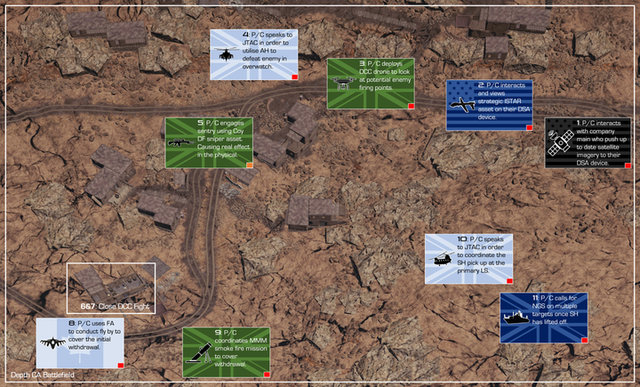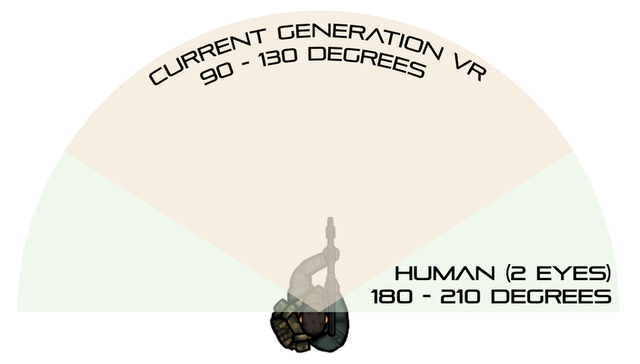VR vs. needs-based training strategies for urban close combat
While training the individual soldier for dismounted close combat operations is achievable, bringing together larger groups of personnel and collective assets within a training space that effectively replicates the intensity and visceral nature of the urban battlefield is complex and expensive. Robert Taylor of combat training specialist 4GD, John Spencer, chair of the Modern Warfare Institute at Westpoint and Duncan Stewart of the UK Defence Scientific and Technology Laboratory (Dstl) discuss a hybrid solution.
Military forces have increasingly turned to simulation to help overcome training challenges. Concerningly, an approach of following the path of least resistance has led to easy and cheap solutions taking priority over those that truly improve dismounted close combat (DCC) training outcomes. As a result, we're seeing more virtual reality (VR) being used to enable DCC skills training already replicated in the physical training setting, rather than seeking to augment that which is practically challenging - complex combined arms (CA) training.
What compounds this problem is that VR is not yet ready for the high fidelity, high muscle memory nature of DCC. While VR could increase - and improve - CA training today, there is a capability gap in dire need of being filled to ensure our collective competitive advantage.

// GM Defence's new president Steve duMont
Training gap
Training the infantry soldier for the DCC environment requires a specialist skillset and toolkit. In the urban environment, junior commanders must be capable of moving seamlessly from conducting a room entry to coordinating a complex CA strike.
Currently, CA training is woefully under-resourced because it is difficult to do well. It requires a departure from the current approach of finding high-tech products and reverse-engineering a military need, and a move toward a needs-based approach, focusing on the physical (power and infrastructure) architecture first, and the synthetic architecture, second.
It is becoming increasingly understood that military training should blend the physical and synthetic environments.
Lately, both in the UK and the US, the physical appears to have been forgotten in favour of the synthetic through programmes such as Synthetic Training Environment (STE) in the US and Single Synthetic Environment (SSE) in the UK.
The issue, and the potential reason for the lack of focus, is the lack of clear demand-based vision as to what SSE should actually do and why. While it is becoming increasingly understood that military training should blend the physical and synthetic environments to yield better results, this principle has not been applied seriously to urban training strategies to create the optimal combination of physical, high fidelity, close combat and synthetically complex combined arms, collective training through synthetic relocation and on-garrison training.
This lack of a clearly articulate vision combined with defence’s perpetual desire to be ‘innovative’ has led to a vacuum into which non-directional ’low’ fidelity solutions have emerged, both ‘pushed’ from industry and ‘pulled’ from defence. This vacuum has been compounded as, with no formal top-down requirement, users have built their own requirements from self-identified gaps.
The answer may lie in shifting to a top-down approach, aligned with a strategic operational doctrine, to allow defence to get ahead of the potential issue where unrequired capabilities are purchased because they are perceived to be what was wanted as the requirement followed the initial capability delivery.

// Contemporary battlefield showing the imbalance between combined arms and situational awareness. Credit: 4GD
Virtual challenge
While VR is a key part of the live-virtual-constructive training trinity because it is a relatively inexpensive and flexible way of delivering training, it cannot touch the visceral, chaotic and exhausting nature of the reality of DCC. It also relies on hardware still largely in its relative infancy and commercial gaming software that cannot guarantee that negative training is not occurring due to V&L data, such as ballistics, inaccurately reflecting target effect.
For example, the use of VR controllers in place of in-service weapon replicas can build up even more false expectations of an individual soldier’s ability to hit a target when compared with real data from live fire tactical training.

// Current VR technology does not offer images in peripheral vision. Credit: 4GD
Virtual simulators are also not able to induce the realistic suppressive effects of live combat missions on trainee behaviour, simply because their lives are not in danger or, at the very least there is little prospect of pain.
Suppressive effects in close quarter battle (CQB) can have considerable effect on behaviour and therefore individual or team effectiveness. If virtual simulators cannot simulate this element, it may not be the right tool for learning real CQB lessons. No decent military instructor ever said: ‘Train easy, fight hard.’
Add into the mix the extreme physicality of the live combat mission and its impact on soldier fatigue, and the loss of situational awareness - peripheral vision, body disconnect, hearing interface - caused by VR head mounted displays, and the limitations of VR-based training methods for the vast majority of manual tasks required for DCC operations come even more sharply into focus.
Hybrid way ahead
Looking toward a training solution that replicates reality for DCC as closely as possible includes a place for VR, but it must be integrated into a wider CA simulation approach that brings together the best of both worlds.
CA simulation offers a number of advantages over VR stand-alone systems. The fidelity requirement is lower (radios and tablets rather than grenades and pistols), the cost of output is higher (compare the cost of a sidewinder against a 5.56 round) and the result offers a competitive advantage in the contemporary operating environment.
The strategic intent of the UK’s SSE is correct in that the future of training must be in the blending of the synthetic and physical to enable affordable complex CA training scenarios. This mix, however, should focus on ensuring the type of training (DCC or CA) is carried out in the optimal environment (virtual or real). This is likely to mean that the SSE starts primarily physical then transitions gradually to virtual as the technology improves.
To ensure that delivered future capabilities fill the current training gap, operational requirements must lead innovation – not vice versa. The current operating environment is becoming more complex than it has ever been due to cost, size and political scrutiny.
Given that Western adversaries’ budgets are disproportionately increasing, the focus needs to be on non-traditional force multipliers rather than just evolving that which we already do well. This focus on CA, rather than SA, could lead to unforeseen capability benefits by disrupting the vertical silo approach to both UK and US procurement and innovation.
CA simulation’s benefits vastly outweigh its costs, particularly when its capacity to train geographically dislocated units in synthetic joint exercises is considered. However, it’s true potential, if done well, may come by empowering individual soldiers. This bottom-up approach to collective training may end up having a far deeper, and more resilient impact. By increasing the lethality of each soldier, the scarcity of current qualifications within each small team would be reduced and their relative overmatch increased.
To achieve this within everyday resource constraints is the challenge and therefore holistic mixed training infrastructure must be built where the soldiers are located (garrison, not centralised) and exercises must test both individual and collective skills simultaneously to achieve better use of finite time.
The future is bright with the SSE, as long as it remains focussed on what is actually needed rather than what visually seems innovative. VR could be the long-term future of DCC training, but it is not currently a useful augmentation to how DCC training is generally conducted, whereas with synthetic CA that future is waiting to be exploited today.
If needs-based small teams urban training is augmented appropriately by the right technology, then the next generation of close combat teams may well yet have a disproportionate effect in the highly urbanised operating environment of the future.
// Main image: 4GD has installed a smart training solution for the British Army’s 16 Air Assault Brigade in Colchester, Essex. Credit: 4GD
Training